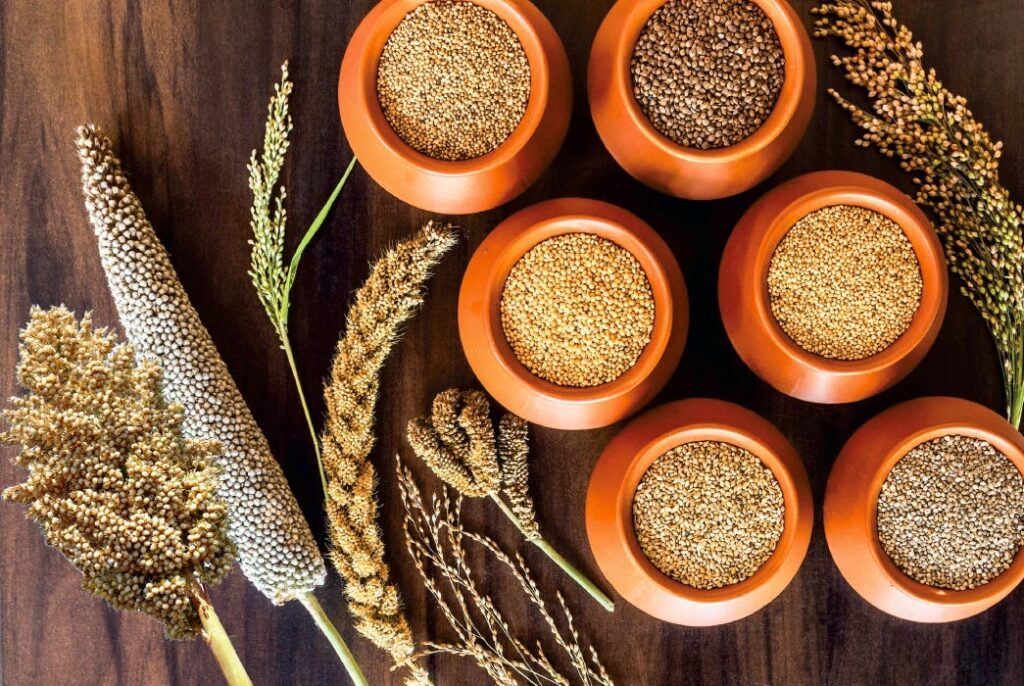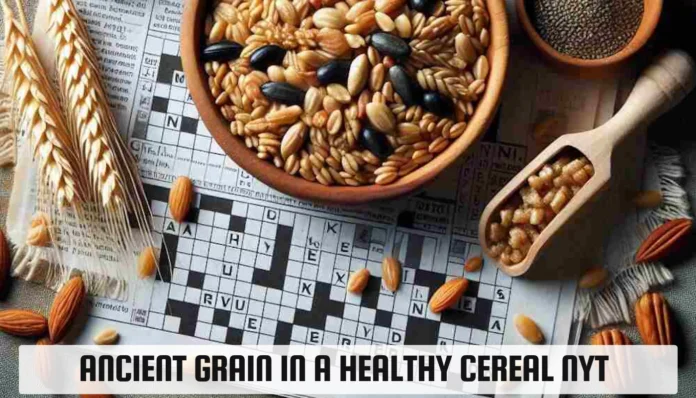Ancient grains have stood the test of time, revered not only for their robust flavors but also for their impressive nutritional profiles. These grains—like quinoa, amaranth, farro, spelled, and millet—were staples of ancient civilizations and have now re-emerged as modern superfoods. This resurgence is fueled by their unmodified genetic structure, which has been preserved over centuries. Ancient grains are celebrated not only in health circles but also in popular culture, including the New York Times Crossword, where they often appear as clues, reflecting their growing relevance in today’s dietary discussions.
The Nutritional Powerhouse of Ancient Grains
The nutritional benefits of ancient grains are vast and varied. Quinoa, often heralded as a complete protein, contains all nine essential amino acids, making it an excellent dietary choice for vegetarians and vegans. Amaranth and millet are rich in fiber and essential minerals like magnesium, which promotes bone health. Farro and spelled offer high levels of vitamins B and E, supporting immune function and skin health, respectively. Unlike modern grains, which often undergo genetic modifications and selective breeding, ancient grains retain their nutrient-rich profiles, making them a superior choice for those seeking dense nutritional content.
Ancient Grains and Digestive Health
Ancient grains are a boon for digestive health thanks to their high fiber content. Fiber aids in digestion by helping to regulate bowel movements and prevent constipation. It also plays a crucial role in maintaining healthy gut flora, which is essential for overall health. Including ancient grains in your diet can be as simple as swapping out modern grains like white rice for farro or barley, adding a nutritious twist to traditional meals. These grains not only enhance the flavor profile of dishes but also contribute to a more satisfying, fiber-rich meal.
Ancient Grains as Superfoods
Labeling ancient grains as superfoods is backed by their rich concentrations of antioxidants and phytonutrients, which combat oxidative stress and inflammation in the body. These grains are not just food but medicine in their own right, with the ability to improve long-term health outcomes. For example, the antioxidants found in quinoa and amaranth can help reduce the risk of chronic diseases such as heart disease and diabetes. Their low glycemic index also makes them an ideal food choice for managing blood sugar levels, contributing to their status as superfoods.

Guide to Popular Ancient Grains in Cereals
The inclusion of ancient grains in commercial cereals has brought these nutritious powerhouses into the mainstream breakfast scene. Brands like Kashi and Bob’s Red Mill have developed ranges of cereals that incorporate ancient grains such as amaranth and quinoa, offering a healthier alternative to traditional cereal options. These products not only provide essential nutrients and sustained energy but also cater to a growing consumer base looking for wholesome, organic, and gluten-free options.
Culinary Delights: Cooking with Ancient Grains
Ancient grains are incredibly versatile in the kitchen. Start your day with a warm bowl of quinoa porridge, or incorporate amaranth into pancakes for a protein-packed breakfast. For lunch or dinner, a farro salad with roasted vegetables offers a satisfying meal, while spell can be used to make a hearty, fiber-rich risotto. These grains can also be used in baking, adding a nutritious twist to breads, cookies, and other desserts, making them a staple for any meal.
Sustainability and Environmental Impact
One of the most compelling reasons to choose ancient grains over modern varieties is their reduced environmental impact. These crops are naturally resilient, requiring fewer pesticides and fertilizers. They are typically grown in harsh climates where other crops might not thrive, promoting biodiversity and reducing the need for chemical inputs. This not only helps maintain the integrity of the land but also supports sustainable farming practices, making ancient grains a responsible choice for environmentally conscious consumers.
The Role of Ancient Grains in Crossword Puzzles
The peculiar names and historical significance of ancient grains make them perfect subjects for crossword puzzles, a testament to their cultural penetration. The New York Times Crossword often features clues related to these grains, highlighting their nutritional benefits and ancient origins. This not only challenges the solver but also educates them about the diverse world of grains, merging the joy of puzzle-solving with learning.

Tips for Solving Crossword Puzzles with Ancient Grains
For those new to crosswords, knowing about ancient grains can provide a distinct advantage. Start by familiarizing yourself with the most common grains and their characteristics, as this will help you quickly identify answers related to food clues. Advanced solvers can look for patterns or common prefixes in grain names, using this knowledge to crack tricky puzzles that reference historical or nutritional aspects of these grains.
Future Trends: The Rise of Ancient Grains
As dietary trends continue to evolve, the demand for ancient grains is expected to rise, driven by consumer interest in health, nutrition, and sustainability. This growing trend is supported by innovations in food processing and agriculture, which make ancient grains more accessible and diverse. As more people recognize their health benefits, ancient grains are likely to become a staple in diets worldwide, reflecting a shift towards more sustainable and health-conscious eating practices.
Supporting Local Economies Through Ancient Grains
Choosing ancient grains can also have a significant economic impact. By supporting local farmers who cultivate these grains, consumers contribute to the preservation of traditional farming practices and help promote crop diversity. This, in turn, strengthens local economies and supports rural communities, as choosing ancient grains is beneficial not only for health but also for local development.
Personal Testimonies and Success Stories
Many individuals have reported significant health improvements after incorporating ancient grains into their diets. These grains have been credited with enhancing digestive health, boosting energy levels, and improving overall well-being. Additionally, crossword enthusiasts often share how a deeper understanding of ancient grains has enriched their puzzle-solving experiences, making each crossword not just a challenge but a learning opportunity.
For More Articles Click the: Ezinee.co.uk
FAQ’s
What are the best ancient grains for breakfast?
Quinoa, amaranth, and millet are excellent choices for a nutritious start to the day, offering high protein and fiber content.
Can I make my ancient grain cereal at home?
Absolutely! Mix your favorite ancient grains with nuts and seeds for a homemade cereal that’s both nutritious and customizable.
Are there gluten-free ancient grains available?
Yes, quinoa and amaranth are naturally gluten-free and suitable for those with gluten sensitivities.
What are some quick ancient grain recipes?
Quinoa salad with mixed vegetables and a lemon vinaigrette or amaranth porridge with fresh berries are quick, healthy options.
Are ancient grains suitable for children?
Definitely! Ancient grains can be included in a variety of kid-friendly recipes like pancakes, cookies, and cereals, making them a nutritious addition to any child’s diet.



